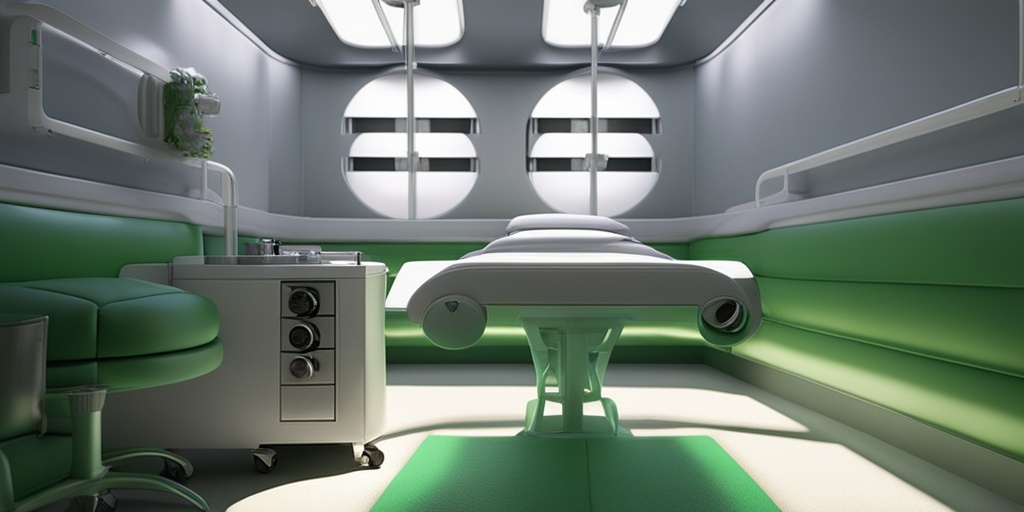What Is Gardner Syndrome?
Gardner syndrome is a rare genetic disorder that affects approximately 1 in 14,000 people worldwide. It’s a type of familial adenomatous polyposis (FAP), a condition characterized by the growth of multiple non-cancerous tumors in the digestive tract. But what exactly is Gardner syndrome, and how does it impact those who live with it?
Gardner Syndrome Definition and Overview
Gardner syndrome is a variant of FAP, a condition that causes the growth of hundreds to thousands of polyps in the colon and rectum. These polyps can become cancerous if left untreated, making early diagnosis and intervention crucial. Gardner syndrome is characterized by the presence of additional symptoms beyond the typical FAP symptoms, including:
- Multiple osteomas (benign bone tumors) in the jaw, skull, and other bones
- Multiple epidermoid cysts (non-cancerous skin growths)
- Lipomas (benign fatty tumors) in the skin and internal organs
- Dental abnormalities, such as extra teeth, missing teeth, or teeth that are smaller than normal
- Other symptoms, including desmoid tumors, fibromas, and congenital hypertrophy of the retinal pigment epithelium (CHRPE)
These additional symptoms set Gardner syndrome apart from traditional FAP, making it a unique and complex condition that requires careful management and monitoring.
At Yesil Health AI (yesilhealth.com), we understand the importance of accurate and evidence-based health information. Our AI-powered platform provides reliable answers to your health questions, including those related to rare conditions like Gardner syndrome.
Stay tuned for more information on Gardner syndrome symptoms, diagnosis, and treatment options. 🤕

Gardner Syndrome Symptoms and Signs
Gardner syndrome is a rare genetic disorder that affects approximately 1 in 1 million people worldwide. It is characterized by a unique set of symptoms and signs that can affect various parts of the body. In this section, we’ll delve into the common symptoms and signs of Gardner syndrome.
Skin Symptoms
One of the most distinctive features of Gardner syndrome is the presence of skin lesions, including:
- Epidermoid cysts: These are small, usually painless bumps that can appear anywhere on the body, but are most common on the face, scalp, and trunk.
- Fibromas: These are benign growths that can occur on the skin, often on the arms, legs, or torso.
- Lipomas: These are benign fatty tumors that can appear as soft, moveable lumps under the skin.
Dental Symptoms
Gardner syndrome can also affect the teeth and jaw, leading to:
- Osteomas: These are benign bone growths that can occur on the jawbone, often causing facial asymmetry or swelling.
- Supernumerary teeth: This is a condition where extra teeth grow in, which can lead to dental crowding and orthodontic issues.
- Dental cysts: These are fluid-filled sacs that can form in the jawbone, often causing pain and swelling.
Other Symptoms
In addition to skin and dental symptoms, people with Gardner syndrome may experience:
- Intestinal polyps: These are growths that can occur in the intestines, which can increase the risk of colon cancer if left untreated.
- Fibrous dysplasia: This is a condition where scar-like tissue grows in place of normal bone tissue, leading to bone deformities and pain.
- Other health issues: Gardner syndrome has been linked to an increased risk of other health problems, including thyroid cancer, adrenal gland tumors, and osteosarcoma (bone cancer).
Causes and Risk Factors of Gardner Syndrome
Gardner syndrome is caused by a genetic mutation in the APC (adenomatous polyposis coli) gene. This gene normally helps regulate cell growth and division, but in people with Gardner syndrome, the mutated gene leads to uncontrolled cell growth and the development of tumors and other symptoms.
Inheritance Pattern
Gardner syndrome is an autosomal dominant disorder, which means that a single copy of the mutated gene is enough to cause the condition. This means that if one parent has the condition, each child has a 50% chance of inheriting the mutated gene and developing Gardner syndrome.
Risk Factors
While anyone can develop Gardner syndrome, certain factors can increase the risk of developing the condition, including:
- Family history: Having a family history of Gardner syndrome or familial adenomatous polyposis (FAP) increases the risk of developing the condition.
- Genetic testing: Genetic testing can identify the mutated APC gene, which can help diagnose Gardner syndrome and identify individuals at risk of developing the condition.
Early diagnosis and treatment are crucial in managing Gardner syndrome and reducing the risk of complications. If you or a loved one is experiencing symptoms of Gardner syndrome, it’s essential to consult with a healthcare professional for proper diagnosis and care. 🏥

Gardner Syndrome Diagnosis and Testing
Gardner syndrome is a rare genetic disorder that affects approximately 1 in 14,000 people worldwide. Diagnosing Gardner syndrome can be challenging, as its symptoms often resemble those of other conditions. However, with the right combination of clinical evaluation, imaging studies, and genetic testing, healthcare professionals can accurately diagnose and manage this condition.
Clinical Evaluation
The diagnostic process typically begins with a thorough clinical evaluation, which involves a physical examination and a review of the patient’s medical history. During this evaluation, the healthcare professional will look for characteristic signs and symptoms of Gardner syndrome, such as:
- Multiple osteomas (benign bone tumors) on the jawbone or other bones
- Multiple epidermoid cysts (skin cysts) on the skin
- Fibromas (benign tumors) in the skin or internal organs
- Desmoid tumors (aggressive fibromatosis) in the abdomen or other areas
- Polyps in the colon or rectum
- Dental abnormalities, such as supernumerary teeth or impacted teeth
Imaging Studies
Imaging studies are essential for confirming the diagnosis of Gardner syndrome. These may include:
- X-rays: To evaluate bone abnormalities, such as osteomas or bone fractures
- Computed Tomography (CT) scans: To visualize internal organs and detect any tumors or cysts
- Magnetic Resonance Imaging (MRI) scans: To evaluate soft tissue abnormalities, such as desmoid tumors
- Colonoscopy: To detect polyps in the colon or rectum
Genetic Testing
Genetic testing is crucial for confirming the diagnosis of Gardner syndrome and identifying the specific genetic mutation responsible for the condition. This typically involves:
- Genetic counseling: To discuss the risks and benefits of genetic testing and the implications of a positive result
- Genetic testing: To identify mutations in the APC gene, which is responsible for Gardner syndrome
Early diagnosis and genetic testing can help identify family members who may be at risk of developing Gardner syndrome, allowing for early intervention and prevention of complications.
Gardner Syndrome Treatment and Management
While there is no cure for Gardner syndrome, treatment and management focus on alleviating symptoms, preventing complications, and improving quality of life. A multidisciplinary approach involving various healthcare professionals, including gastroenterologists, dermatologists, orthopedic surgeons, and genetic counselors, is essential for effective management.
Surgical Interventions
Surgical interventions may be necessary to remove tumors, cysts, or polyps, or to repair bone abnormalities. These may include:
- Osteoma removal: To alleviate symptoms and improve facial aesthetics
- Cyst removal: To prevent infection and improve skin appearance
- Tumor removal: To prevent cancer development and alleviate symptoms
- Polyp removal: To prevent colon cancer and alleviate gastrointestinal symptoms
Medications and Therapies
Medications and therapies may be prescribed to manage symptoms and prevent complications. These may include:
- Pain management medications: To alleviate pain and discomfort
- Antibiotics: To prevent infection in skin cysts or wounds
- Chemotherapy: To treat desmoid tumors or other aggressive tumors
- Genetic counseling: To provide guidance on family planning and risk assessment
Regular monitoring and follow-up appointments with healthcare professionals are crucial for managing Gardner syndrome and preventing complications. With proper treatment and management, individuals with Gardner syndrome can lead active and fulfilling lives. 💊

Surgical Options for Gardner Syndrome
Gardner syndrome is a rare genetic disorder characterized by the growth of multiple tumors, including osteomas, epidermoid cysts, and desmoid tumors. While there is no cure for Gardner syndrome, surgical options can help manage the symptoms and improve the quality of life for individuals affected by this condition.
Osteoma Removal
Osteomas are benign bone tumors that can grow on the surface of bones, particularly in the jaw, face, and skull. In Gardner syndrome, osteomas can cause facial disfigurement, dental problems, and sinus infections. Surgical removal of osteomas can help alleviate these symptoms and improve facial aesthetics. The procedure typically involves a simple excision of the tumor, and the bone can be reshaped to restore its natural contour.
Cyst Removal
Epidermoid cysts are benign growths that can occur on the skin, particularly on the face, scalp, and neck. In Gardner syndrome, these cysts can become inflamed, infected, or rupture, causing discomfort and cosmetic concerns. Surgical removal of these cysts can help prevent complications and improve skin appearance. The procedure involves a simple excision of the cyst, and the skin can be closed with sutures or staples.
Desmoid Tumor Resection
Desmoid tumors are benign growths that can occur in the connective tissue of the body. In Gardner syndrome, desmoid tumors can grow in the abdomen, chest, or limbs, causing pain, discomfort, and limited mobility. Surgical resection of these tumors can help alleviate symptoms and improve quality of life. The procedure involves removing the tumor and a small margin of surrounding tissue to ensure complete removal.
Lipoma Removal
Lipomas are benign fatty tumors that can grow under the skin, particularly on the arms, legs, and torso. In Gardner syndrome, lipomas can cause discomfort, pain, and cosmetic concerns. Surgical removal of lipomas can help alleviate these symptoms and improve body contours. The procedure involves a simple excision of the tumor, and the skin can be closed with sutures or staples.
Lifestyle Changes for Managing Gardner Syndrome
While surgical options can help manage the symptoms of Gardner syndrome, lifestyle changes can also play a crucial role in improving the quality of life for individuals affected by this condition.
Dietary Changes
A healthy diet rich in fruits, vegetables, and whole grains can help reduce the risk of complications associated with Gardner syndrome. Foods high in antioxidants, such as berries and leafy greens, can help reduce inflammation and oxidative stress. Avoiding processed and sugary foods can also help reduce the risk of obesity and related health problems.
Regular Exercise
Regular exercise can help improve overall health and reduce the risk of complications associated with Gardner syndrome. Gentle exercises, such as yoga or swimming, can help improve flexibility and reduce pain. Avoiding high-impact activities, such as contact sports, can help reduce the risk of injury and complications.
Stress Management
Stress can exacerbate the symptoms of Gardner syndrome, so it’s essential to manage stress levels through relaxation techniques, such as meditation, deep breathing, or progressive muscle relaxation. Getting enough sleep, practicing good sleep hygiene, and engaging in activities that bring joy and relaxation can also help reduce stress levels.
Regular Check-Ups
Regular check-ups with a healthcare provider can help monitor the progression of Gardner syndrome and detect any complications early. Regular dental check-ups can also help prevent dental problems associated with osteomas and cysts.
By combining surgical options with lifestyle changes, individuals with Gardner syndrome can improve their quality of life, reduce symptoms, and manage complications. It’s essential to work closely with a healthcare provider to develop a personalized treatment plan that addresses individual needs and goals. 💊

Frequently Asked Questions about Gardner Syndrome
What is Gardner Syndrome?
Gardner Syndrome is a rare genetic disorder characterized by the growth of multiple tumors, including osteomas, lipomas, and epidermoid cysts. It is also known as Familial Adenomatous Polyposis (FAP).
What are the symptoms of Gardner Syndrome?
The symptoms of Gardner Syndrome vary from person to person, but common signs include:
- Multiple osteomas (benign bone tumors)
- Lipomas (benign fatty tumors)
- Epidermoid cysts (skin cysts)
- Desmoid tumors (aggressive fibromatosis)
- Colorectal polyps and cancer
- Dental abnormalities, such as extra teeth or missing teeth
- Skin lesions, such as sebaceous cysts and fibromas
How is Gardner Syndrome diagnosed?
Gardner Syndrome is typically diagnosed through a combination of:
- Medical history and physical examination
- Imaging tests, such as X-rays, CT scans, and MRI scans
- Genetic testing, including DNA sequencing and mutation analysis
- Colonoscopy and biopsy to detect colorectal polyps and cancer
How is Gardner Syndrome treated?
Treatment for Gardner Syndrome usually involves a multidisciplinary approach, including:
- Surgical removal of tumors and polyps
- Regular colonoscopies to monitor for colorectal cancer
- Medications to manage symptoms and prevent complications
- Genetic counseling and testing for family members
Is Gardner Syndrome inherited?
Yes, Gardner Syndrome is an autosomal dominant disorder, which means that a single copy of the mutated gene is enough to cause the condition. If one parent has the condition, each child has a 50% chance of inheriting the mutated gene.
What is the prognosis for Gardner Syndrome?
The prognosis for Gardner Syndrome varies depending on the severity of the condition and the effectiveness of treatment. With proper management, many people with Gardner Syndrome can lead normal lives, but they may require ongoing monitoring and treatment to prevent complications.
Can Gardner Syndrome be prevented?
Since Gardner Syndrome is a genetic disorder, it cannot be prevented. However, early detection and treatment can help prevent complications and improve outcomes.
Where can I find more information about Gardner Syndrome?
For more information about Gardner Syndrome, you can consult with a healthcare professional or visit reputable online resources, such as the National Institutes of Health (NIH) or the American Cancer Society.




